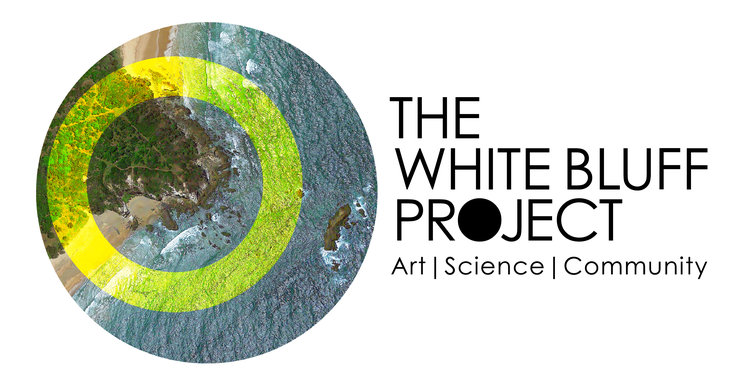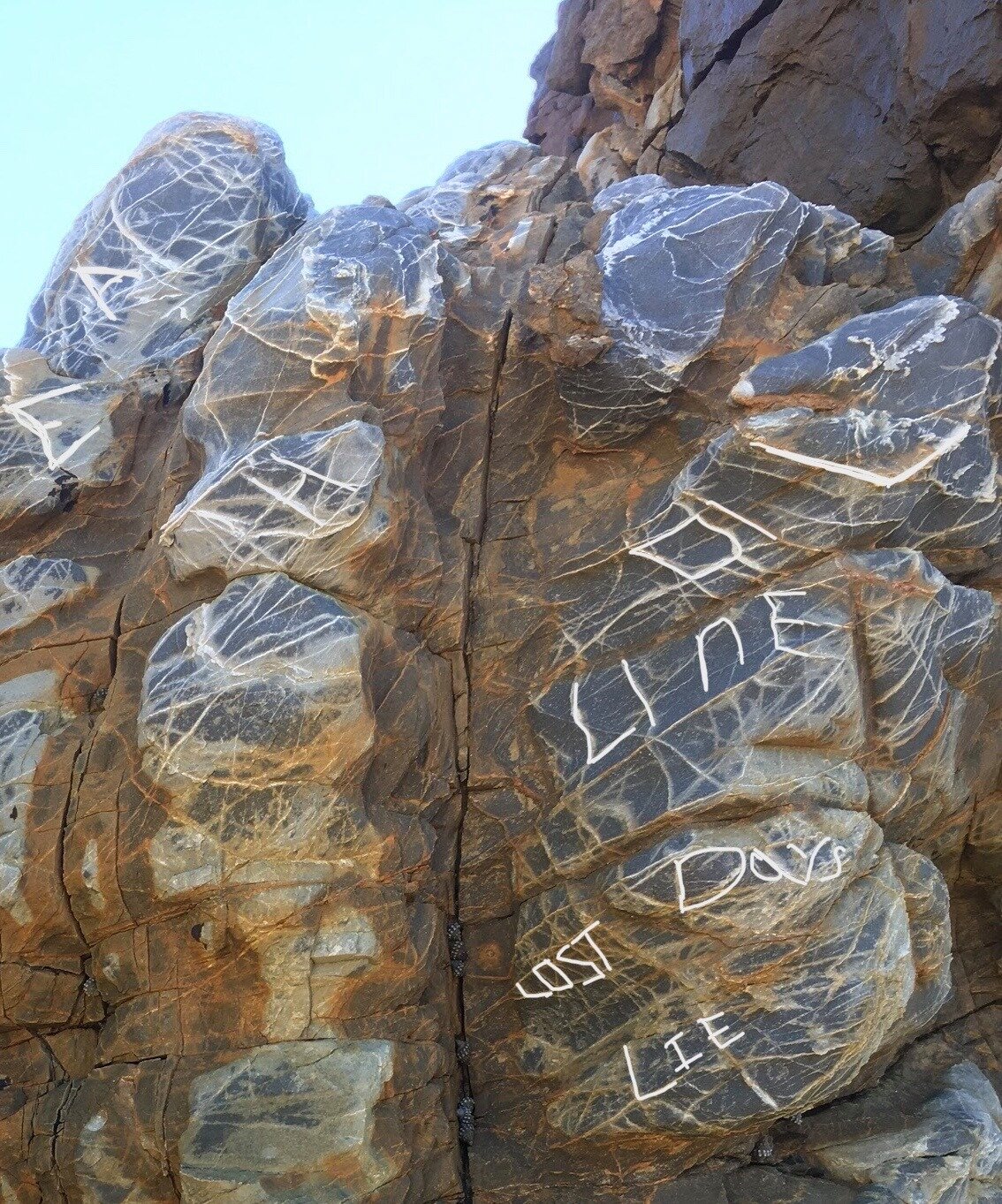When Coffs Harbour artist Ray Rixon described his long, personal connection to White Bluff, it resonated with writer Chris Armstrong’s instinct for story-telling.
“In our initial conversations, Ray mentioned his own inspirations as an artist, and how his connection with White Bluff had lasted decades. Similarly, my poetry practice has always been strongly tied to natural environments and informed by experiences - walking and exploring remote corners of Australia's wild places and engaging with the landscape. I was looking forward to meeting and responding to the landscape of White Bluff in this way.
Chris Armstrong's poetry has appeared in numerous Australian and overseas literary journals, most recently K'in, Backstory and Authora as well as Plumwood Mountain, Foam:e, Griffith Review and in Cordite. Armstrong was runner up in the Judith Wright Overland Poetry Prize for New and Emerging Writers in 2015 and received an ASA Emerging Writers Mentorship for her poetry manuscript The Watershed, which was published as a chapbook in 2017.
As a poet, Chris writes lyric poetry (the most popular modern form - short, single subject, single voice) but her preference is for Narrative Poetry - unfolding, rhythmic, story focussed with her main subject being the Australian landscape: exploring human experiences of it and our relationships with it; juxtaposing observations of the natural world with human themes of belonging and alienation.
Chris grew up in Coffs Harbour but has lived and worked all over Australia and spent time overseas. She began her writing career as a cadet journalist on the Coffs Harbour Advocate. After 10 years in journalism and PR she chose to do a Masters in Creative Writing.
“I started with novels but I always had this secret joy, which was writing poetry. When you read a poem that resonates, it is like someone has wrapped up life as a tiny, honest, beautiful gift. Good poetry gives insight and understanding and gratitude. That shared awareness of the experience and significance of life, the world, a moment. That’s what I seek, both as a reader and writer.”
For The White Bluff Project, Chris said that bringing words to a point where they could be presented in a visual exhibition was a new challenge , as was the process of collaboration.
“The initial excursions to White Bluff gave me glows of great ideas, particularly the interactions with our ecologists Mark Graham and Greg Elks.
“I’m not an ocean person really. Mountains and forests are my place. So at first I was a little unsure of how to proceed. But the geology of the headland worked its magic. The patterns in the rocks there are extraordinary.”
For The White Bluff Project, Chris has collaborated on a major artwork with artists Sarah Mufford and Tori Donnelly. She describes the process as joyous but challenging.
“Tori talked about her feeling for the land, which comes through her culture. I was impressed by that innate, deep sense of place that goes hand in hand with her heritage. I wanted to learn more about that. We talked about language and she was learning Gumbaynggirr. We can’t genuinely talk about any place in Australia without talking in its original language.
“I wrote a long draft narrative poem and showed it to her. Tori then translated sections to Gumbaynggirr and then handed it back to me and I wove these into a new poem, something shorter that could be played on a canvas that Sarah had prepared.
“The amazing thing about this was how organically it all came about. None of us specified anything much. We never all sat down and set a plan or a concept or a final vision to work towards. It just happened and it has resulted in a piece that I think is powerful, and complete.”
But the greatest challenge to the collaborative process was the 2020 COVID pandemic. At the time of its outbreak, Chris was working in Tasmania, 6 months into an 8 month long contract. As borders closed and restrictions tightened the collaborative process, for all White Bluff team members, became more difficult. Living in Hobart at the time, the distance from the site itself became a creative challenge.
“All my writing is informed by my experience of a landscape. I spend hours sitting on mountaintops, walking through forests, huddled in the weather writing and borrowing words and experiences from the landscape around me. I had planned to do the same thing at White Bluff.
“I was forced to rely on notes and photos taken from my first few visits to White Bluff. Eventually though I had to rethink my focus. I turned to more of the human histories of the site - indigenous, early settler, and modern life. The Coffs Harbour Regional Museum’s online Coffs Collections was an invaluable resource. As was Trove. Research done by Dr Lisa Milner, historian and one of our science collaborators , also provided valuable leads for my own digital exploration of White Bluff.
“For the physical creation and collaboration of a final artwork, with Tori and Sarah, we also turned to digital communication, like so much of the world did. There were multiple text messages, emails, phone calls and video chats as we shared discoveries, worked on the poem’s Gumbaynggir language and explored techniques for the final artwork. When it came to putting the words onto the canvas in Sarah’s studio we organised a video call so I could watch them at work and offer virtual support. It was bittersweet. I would have loved to have been there to help it come together.
“Now, almost 18 months later, I still haven’t seen the finished artwork.”
It was a similar process for other collaborations that Chris worked on, particularly with artist Terri Butterworth. A series of phone conversations were followed by Terri posting her artworks to Tasmania where Chris marked them up with text before posting them back to Coffs Harbour for Terri to finalise.
“I won’t lie and say it was easy. The separation was challenging but we made it work. The final works suffer nothing for how the collaborative process was forced to continue. In fact, it is highly likely some of the most powerful elements in the final pieces may never have come about if it weren’t for the unique way I was forced to research and connect with the site and the other artists.”
It is a credit to all the White Bluff Project participants that they have kept creating and collaborating throughout the COVID pandemic. It is difficult to overstate how disruptive it proved for each participant, given that collaboration has been at the heart of the project’s journey and the pandemic hit at the height of the creative process. And yet, the final artworks, and the group collaborations, have been remarkable.
Stay tuned over the coming weeks as we continue to profile each team member and share with you some of these stories of collaboration. In the meantime, follow our social media feed and if you want to see what Chris Armstrong really means when she says she spends hours “sitting on mountaintops, walking through forests, huddled in the weather” then check out her blog about wilderness adventures at awildland.blogspot.com.au.









